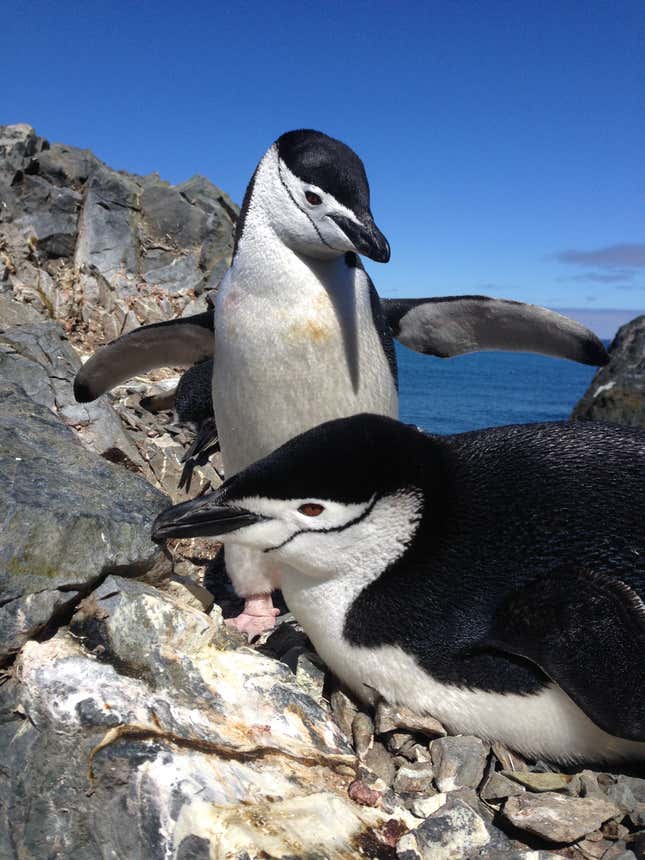In what either sounds admire a blissful cruise through life or hell on Earth, nesting chinstrap penguins apparently take thousands of naps per day, in order to get enough sleep while remaining alert to threats.
Guarding a nest is busy work for a penguin; there are predators admire the brown skua, which feed on penguin chicks and eggs, to worry about, as well as other penguins, which can disturb one anothers’ nests and even steal the materials from them. Research published today in Science describes the bizarre micro-napping habits of chinstrap penguins, native to Antarctica, which allow them to keep a watchful eye nearly 24/7.
Getting enough sleep is paramount to human health; not getting enough of it, or poor-quality sleep, can cause a variety of health risks. Most mammals exhibit REM sleep, researchers previously told Gizmodo, the sleep stage associated with dreaming and memory consolidation, according to the Sleep Foundation.
The penguins in this research rely on extremely short naps. These bouts of rest—or “microsleeps,” as the research team calls them—last about four seconds on average, and the chinstrap penguins could take over 10,000 of these naps per day. Cumulatively, the animals slept about 11 hours per day.
To research the penguins’ sleep, the team put electrodes in the brains and neck muscles of wild nesting chinstrap penguins on Antarctica’s King George Island. They took data on the electrical activity in the animals’ brains, in what is called an electroencephalogram, or EEG.
EEGs are great tools for studying sleep in wild animals; earlier this year, a different team found that elephant seals get their shut-eye while taking deep, corkscrew-shaped dives on their days-long open-water swims. Though the chinstrap penguin colonies are obviously more accessible than seals thousands of feet below the ocean surface, the EEG data allowed the team to know for sure that the penguins were sleeping (you can’t exactly ask them to confirm.)

The new research “calls into question not only the current understanding of how sleep architecture is regulated but also the extent to which it can be altered before the benefits of sleep are lost,” said Christian Harding, a sleep physiologist at the University of California – San Diego, and Vladyslav Vyazovskiy, a sleep physiologist at the University of Oxford, in a related Perspectives article.
“With the advent of modern techniques that dissect the contribution of specific brain circuits to sleep oscillations and local and global control of sleep, elucidating the neurophysiological substrate of sleep has become a focus of sleep research,” they added. “However, most of the progress made in this area has come from mammals, and knowledge of sleep-wake–controlling circuitry in birds remains in its infancy.”
The researchers noted that mallard ducks will sleep with both eyes closed when safely surrounded by fellow birds. But they sleep with one eye open (and in just one cerebral hemisphere) when at the edge of a group, where they would be more vulnerable to threats. But among the chinstrap penguins, the team’s data suggested, those sleeping near the center of the colony had even more disturbed sleep than those on the edges, due to interactions within the colony itself—and the colony’s raucous noise.
The next time you wake up feeling groggy, irritable, or are otherwise frustrated with your night’s sleep, take a page out of the penguins’ book: try 10,000 naps instead.

